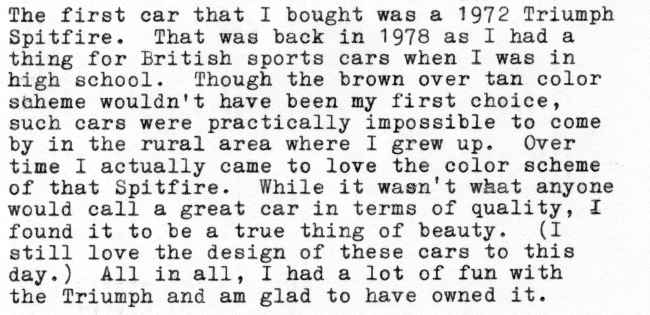
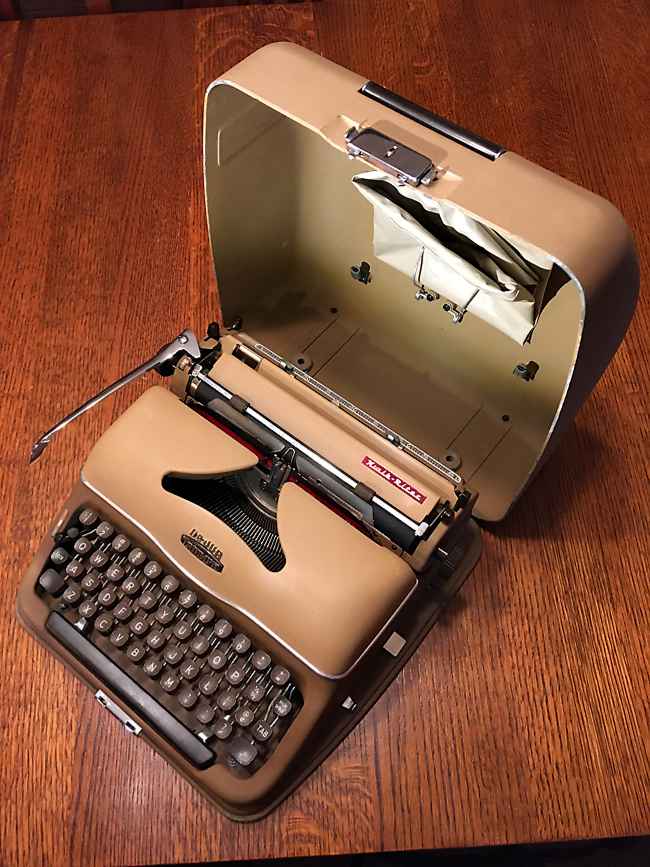
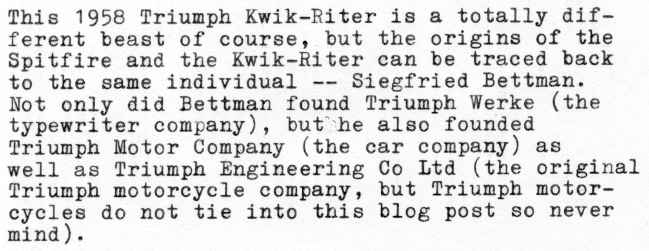
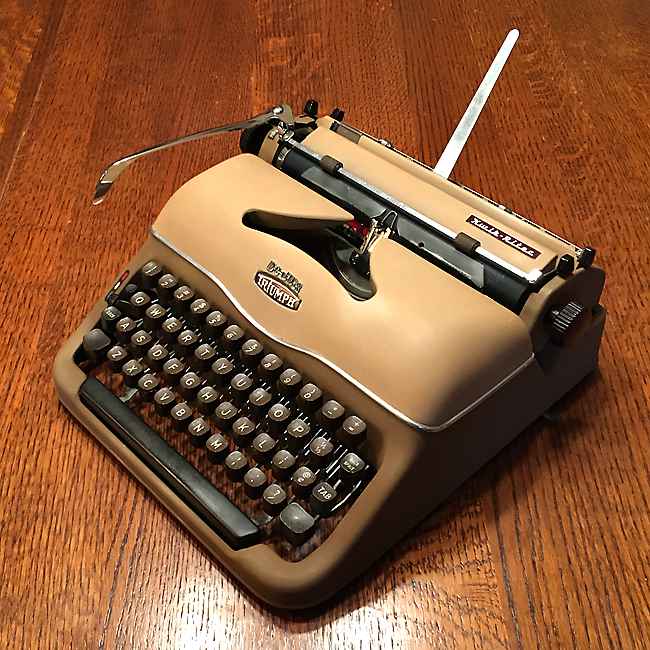
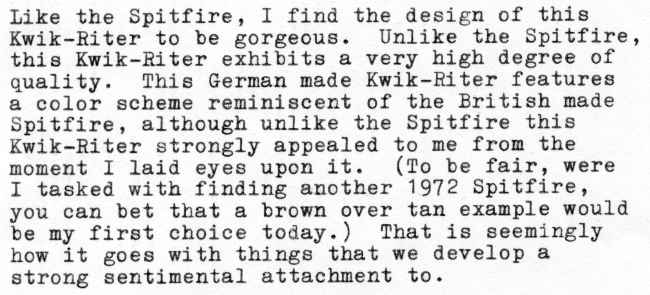
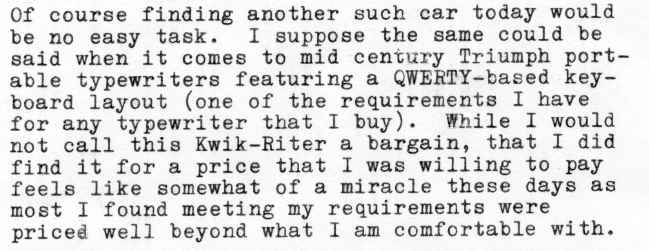
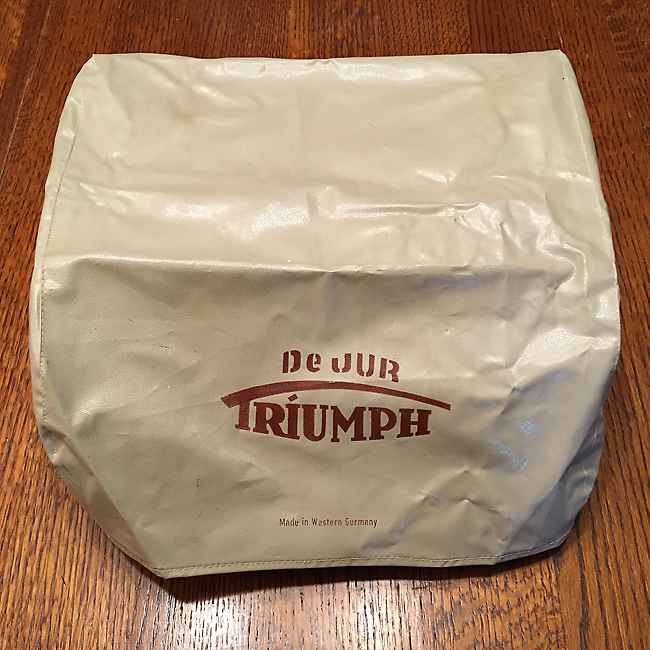
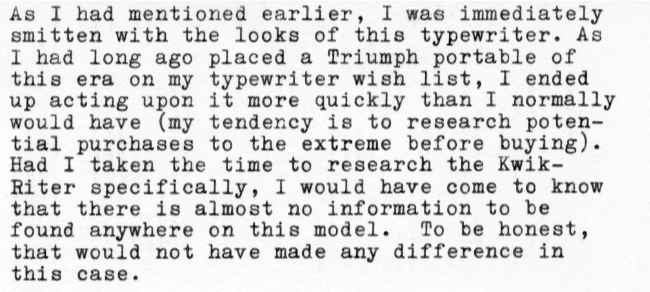
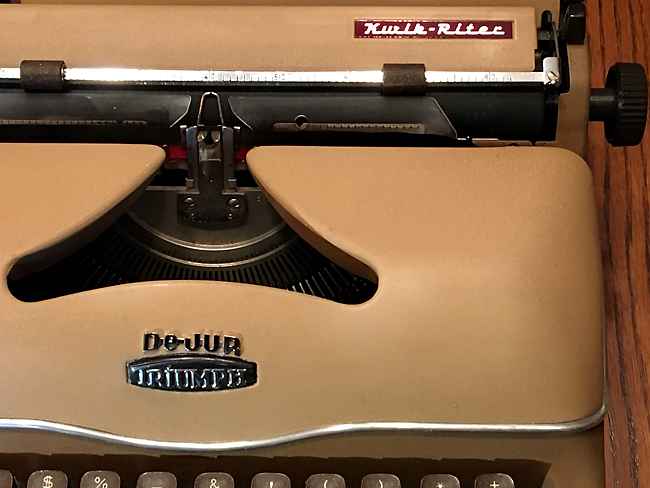
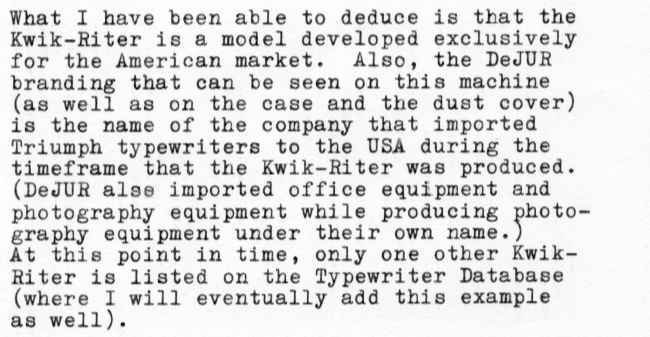
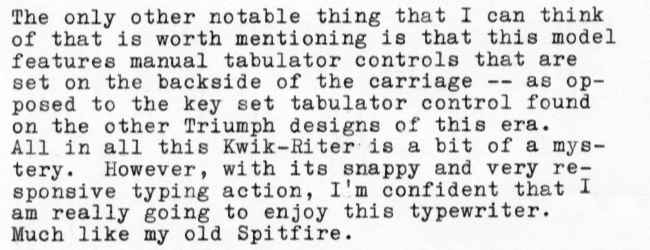
The first car that I bought was a 1972 Triumph Spitfire. That was back in 1978 as I had a thing for British sports cars when I was in high school. Though the brown over tan color scheme wouldn’t have been my first choice, such cars were practically impossible to come by in the rural area where I grew up. Over time I actually came to love the color scheme of that Spitfire. While it wasn’t what anyone would call a great car in terms of quality, I found it to be a true thing of beauty. (I still love the design of these cars to this day.) All in all, I had a lot of fun with the Triumph and am glad to have owned it.
This 1958 Triumph Kwik-Riter is a totally different beast of course, but the origins of the Spitfire and the Kwik-Riter can be traced back to the same individual — Siegfried Bettman. Not only did Bettman found Triumph Werke (the typewriter company) , but”he also founded Triumph Motor Company (the oar company) as well as Triumph Engineering Co Ltd (the original Triumph motorcycle company, but Triumph motor-cycles do not tie into this blog post so never mind).
Like the Spitfire, I find the design of this Kwik-Riter to be gorgeous. Unlike the Spitfire, this Kwik~Riter exhibits a very high degree of quality. This German made Kwik-Riter features a color scheme reminiscent of the British made Spitfire, although unlike the Spitfire this Kwik-Riter strongly appealed to me from the moment I laid eyes upon it. (To be fair, were I tasked with finding another 1972 Spitfire, you can bet that a brown over tan example would be my first choice today.) That is seemingly how it goes with things that we develop a strong sentimental attachment to.
Of course finding another such car today would be no easy task. I suppose the same could be said when it comes to mid century Triumph portable typewriters featuring a QWERTY-based keyboard layout (one of the requirements I have for any typewriter that I buy) . While I would not call this Kwik-Riter a bargain, that I did find it for a price that I was willing to pay feels like somewhat of a miracle these days as most I found meeting my requirements were priced well beyond what I am comfortable with.
As I had mentioned earlier, I was immediately smitten with the looks of this typewriter. As I had long ago placed a Triumph portable of this era on my typewriter wish list, I ended up acting upon it more quickly than I normally would have (my tendency is to research potential purchases to the extreme before buying). Had I taken the time to research the Kwik-Riter specifically, I would have come to know that there is almost no information to be found anywhere on this model. To be honest, that would not have made any difference in this case.
What I have been able to deduce is that the Kwik-Riter is a model developed exclusively for the American market. Also, the DeJUR branding that can be seen on this machine (as well as on the case and the dust cover) is the name of the company that imported Triumph typewriters to the USA during the timeframe that the Kwik-Riter was produced. (DeJUR also imported office equipment and photography equipment while producing photography equipment under their own name. At this point in time, only one other Kwik-Riter is listed on the Typewriter Database (where I will eventually add this example as well).
The only other notable thing that I can think of that is worth mentioning is that this model features manual tabulator controls that are set on the backside of the carriage —as opposed to the key set tabulator control found on the other Triumph designs of this era. All in all this Kwik-Riter is a bit of a mystery. However, with its snappy and very responsive typing action, I’m confident that I am really going to enjoy this typewriter. Much like my old Spitfire.
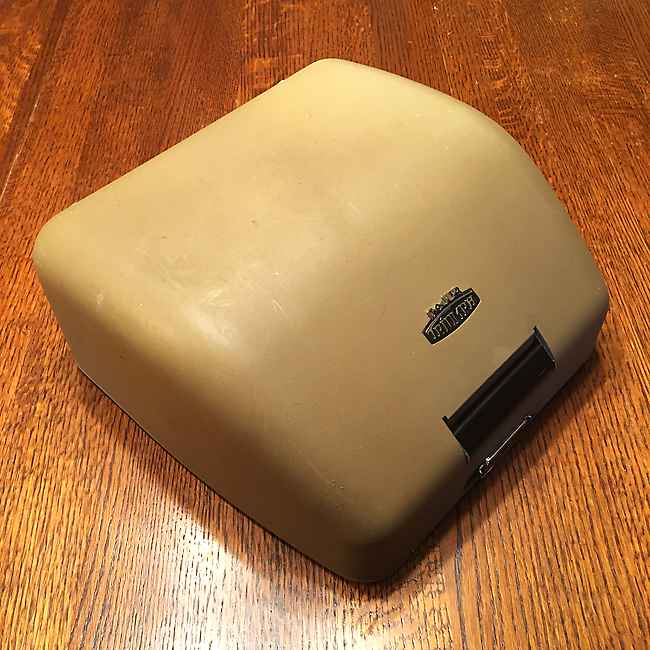
AFTERTHOUGHTS: Soon after I finished typing up this blog post, I did think of another thing worth noting about this Triumph portable typewriter — the case it came with. Made of molded aluminum, with a stout, spring-loaded retractable handle and an auto-latching mechanism, it is almost as impressive as the typewriter itself. Being still relatively new to the world of typewriters, I’m not really sure how many other machines were offered with cases such as this one, but this is the first of its type that I’ve owned. As it is incredibly robust, Triumph was able to make the case not too much larger than the typewriter itself. It is also surprisingly light in weight.
One last thing. Anyone out there looking for more information on typewriters in general would be wise to visit Robert Messenger’s always wonderful blog, Oz.Typewriter. Of course Robert’s blog is one of the very few sites featuring information on Triumph portable typewriters.

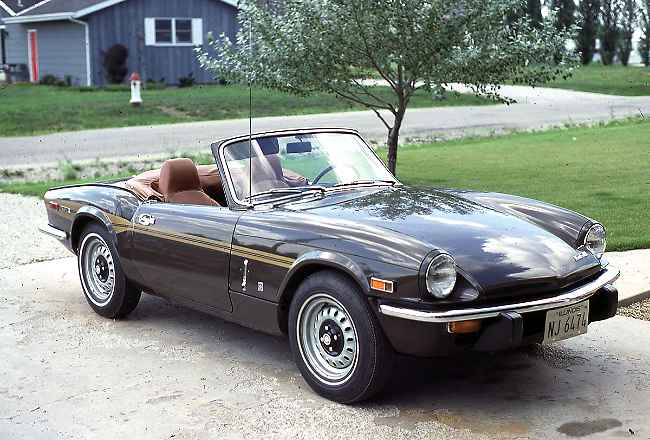
Delightful machines! I agree about the case – excellent design with one small exception: the compression fittings that hold the machine to the case base. There’s a trick to getting them loose so you can replace the rubber bits..
https://munk.org/typecast/2016/02/04/triumph-perfekt-getting-it-off-the-case-base-and-replacing-the-bad-bits/
That’s interesting Ted. The mounting system used in the case of this Kwik-Riter is totally different than the one found in the case for your Perfekt as documented in the referenced blog post. I’ll try to remember to include photos of this system when I add the Kwik-Riter to the Typewriter Database.
Fantastic and beautiful!
Thanks for explaining hiw the typewriters, the cars and the motorcycles are linked together.
Thanks Daniel!
I stick to brown typewriter prices, but over time, their neutral and subtle color themes have grown on me. They blend with practically any grown-up decor and hide dirt & smudges well. Yours is a beauty!
Thanks Mei!
I have a similar machine, and I think it gives the vaunted Olympia Sm3,4,5 etc a damned good run for the money. Much quieter too! And more rare! They all seem to be 2 tone brown however…
Triumph definitely appeared to favor the brown motif in one form or another during this time period. Fortunately I’m really digging this machine both for the way it looks as well as the way it types. While I have been fortunate to try out all sorts of different typewriters, it seems to be the mid-century German models in particular that have really captured my heart and imagination. In addition to this Triumph, I also own similar models (give or take a few years) from the likes of Alpina, Olympia, Tornado, and Voss. Though they all have their strengths, they are also different enough to keep things interesting.